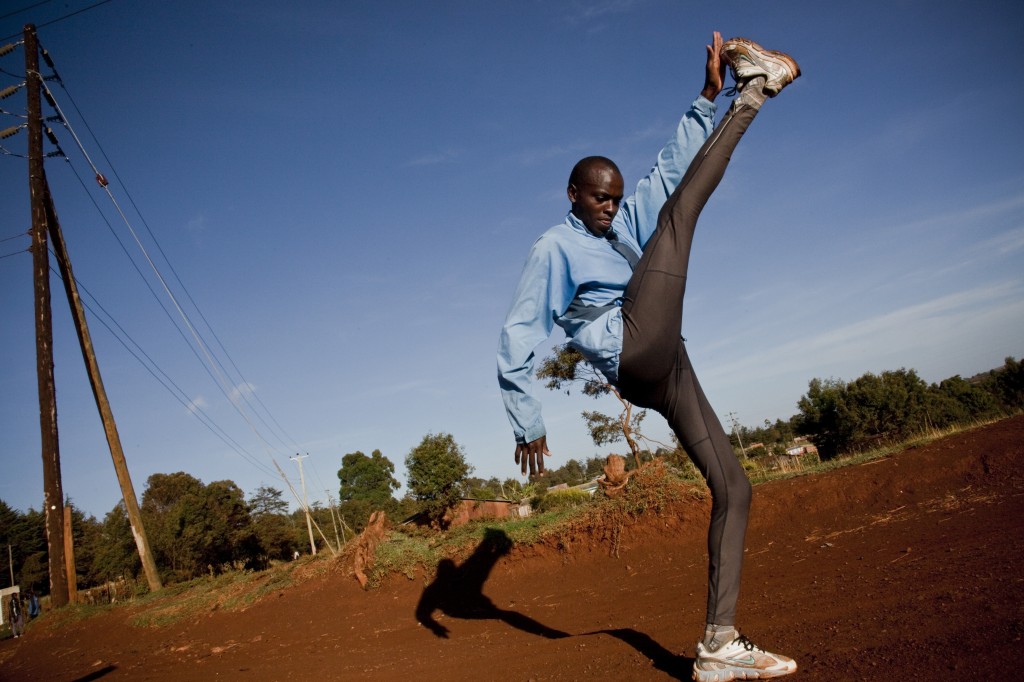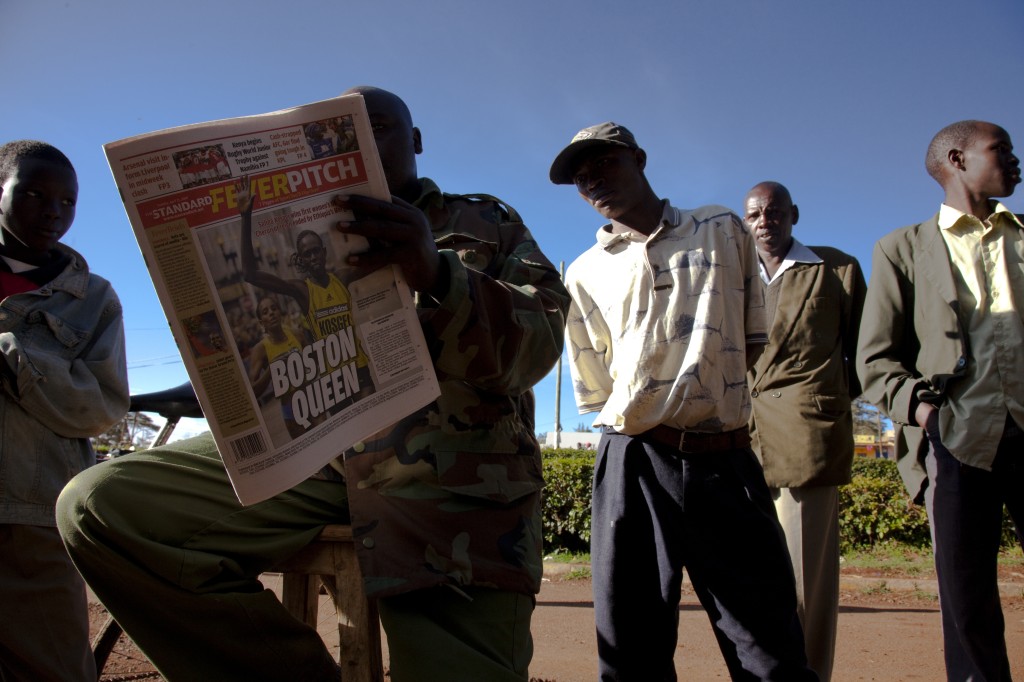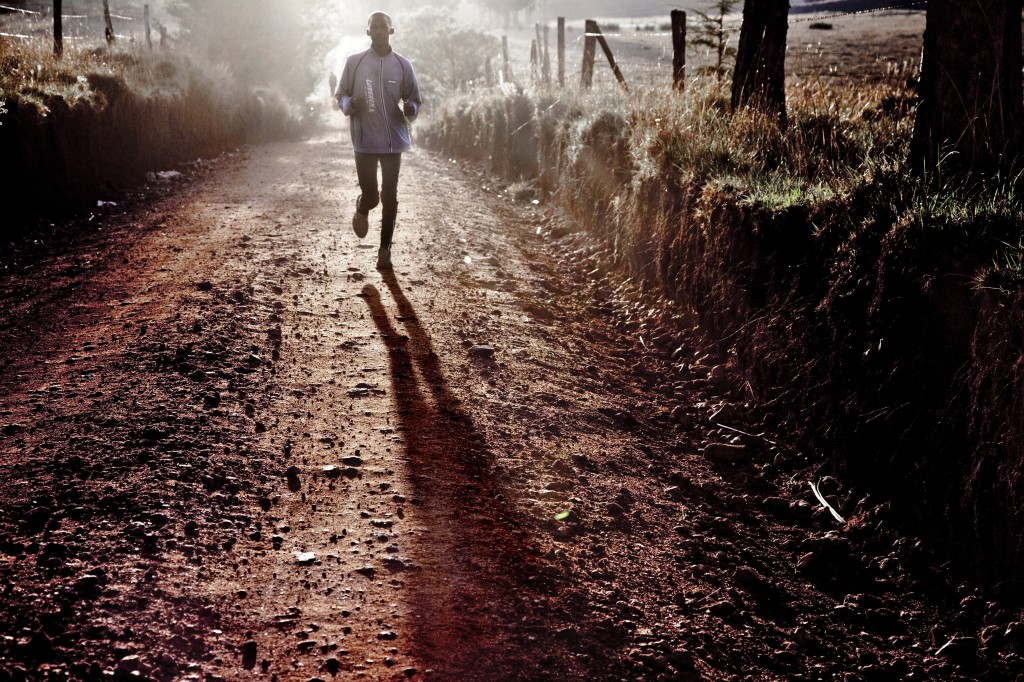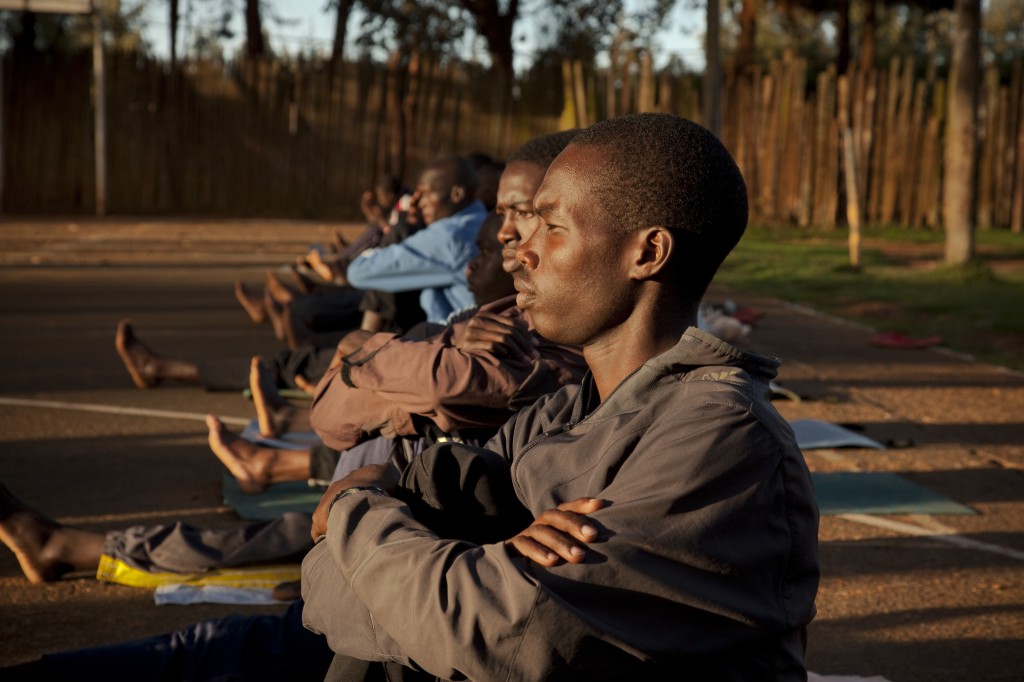Rarefied Air: Eight days at Kenya’s High-Altitude Training Camp
This running haven is home to some of the fastest athletes on the planet.

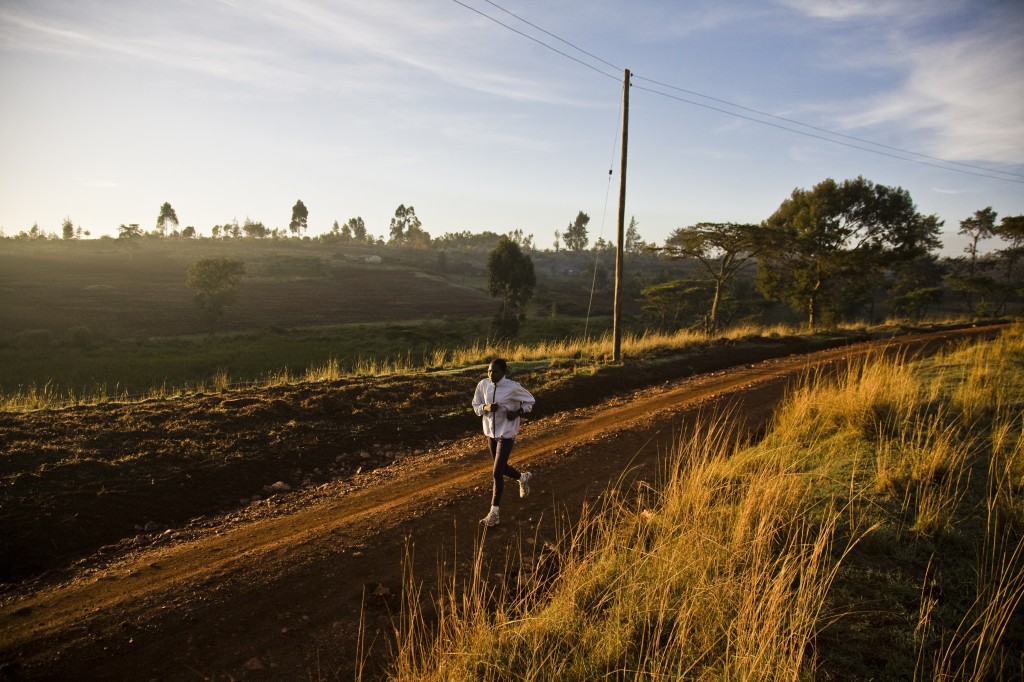 The drive from Eldoret International Airport to the tiny running town of Iten is less than remarkable. It’s paved, lined with the usual fruit and vegetable kiosks and, aside from the Kenyan commuter buses called matatus, there are often more pedestrians than vehicles. It’s uphill the whole way, climbing to an altitude of 2,400 metres above sea level. It’s only when you arrive in Iten – and stay for a little while – that you sense something remarkable happens here. This running haven is home to some of the fastest athletes on the planet.
The drive from Eldoret International Airport to the tiny running town of Iten is less than remarkable. It’s paved, lined with the usual fruit and vegetable kiosks and, aside from the Kenyan commuter buses called matatus, there are often more pedestrians than vehicles. It’s uphill the whole way, climbing to an altitude of 2,400 metres above sea level. It’s only when you arrive in Iten – and stay for a little while – that you sense something remarkable happens here. This running haven is home to some of the fastest athletes on the planet.
I’m here for only eight days, to train and to get a curious, if fleeting, glimpse into what makes Kenyan runners so fast. When I first arrive, I can’t tell that the air is thinner, or that the running culture so different, but I will find out soon enough.
Day One
I check myself into the High Altitude Training Camp, a running resort set in the rural, hilly fields of Iten. Four-time world champion Lornah Kiplagat founded the camp, originally to give young Kenyan girls a place to train and maintain their academic studies. Now, anyone can come here to stay and train.
I’m a regular, five-times-a-week runner. I race about six to 10 times a year at half-marathon distances and shorter, but I’m by far the most recreational runner at the place. And I’m here for the shortest amount of time. Given the high altitude, most serious runners stay in Iten for at least three weeks – one week to acclimatize, the rest of the time to build up mileage and oxygen-carrying red blood cells.
The rooms are modest, with one or two beds, a wooden dresser and no bedside light. They serve decent food – decent being elevated to absolutely delicious once you begin your two-or-three-runs-per-day training schedule. Dinner tonight is roast chicken, bitter sautéed spinach and two Kenyan carbohydrate staples: ugali, which is sort of like mashed potatoes but made with maize flour, and chapati, a variation on Indian naan bread. I eat with a friendly Cambodian woman, Nary Ly. She tells me she’s going for an easy 8K loop in the morning, and that she has begun her taper for the New York City Marathon. I ask if I can tag along, thinking her 5:30-per-kilometre pace sounds reasonable.
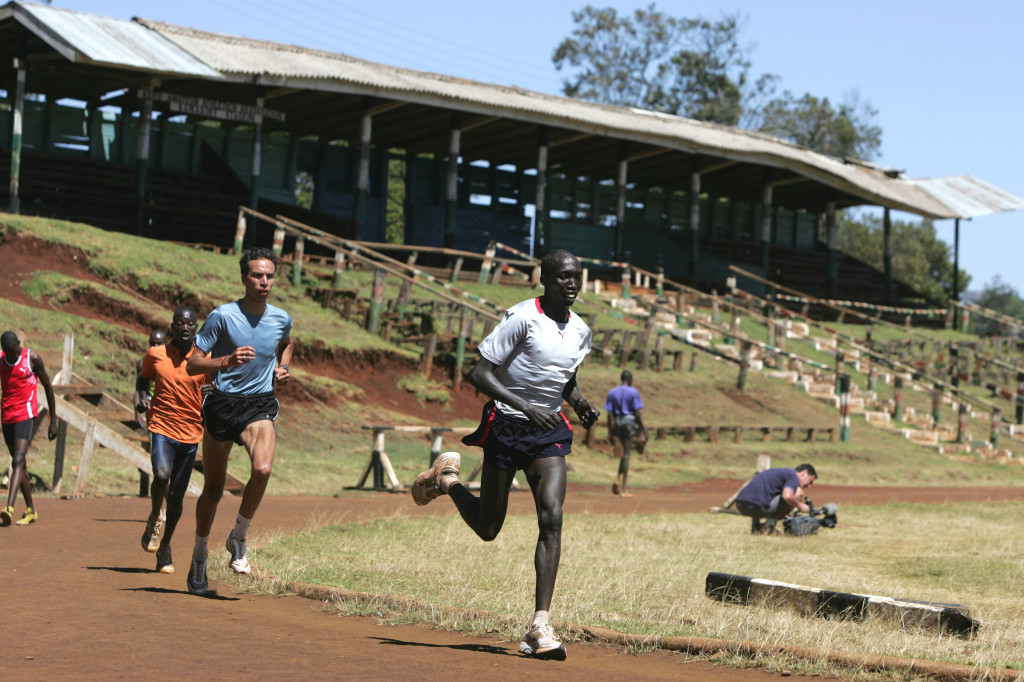
Iten, Kenya
Day Two
The easy 8K loop isn’t so easy. It’s hilly, fast (our pace is often 4:30 per kilometre) and there’s no energy for conversation. My heart feels like it’s the size of a pea. I’m not prepared for this altitude, and wonder how I’m going to make it through the next week deprived of oxygen. We return in time to devour breakfast, which is served at 8 a.m. every morning: pineapple, white bread, scrambled eggs, coffee and tea. All the runners have covered at least 8K, and will likely log another 20K before the day ends.
I spend the rest of the day either napping or reading lying down. But then 4 o’clock comes and I’m supposed to drag myself around town for another 6K.
*****
Iten is a small farming village about 320 kilometres northeast of Nairobi. In the heart of Kenya’s high-altitude, mountainous region of the Rift Valley, its escarpment overlooks the expansive and striking Kerio Valley National Park. Iten is famous for the world-class runners it either produces or hosts. Some are born here; others come from elsewhere in the country – and the world – to train. At any given time, there are between 600 to 1,000 runners stationed here. It’s not hard to believe, as packs upon packs of 15, 20 or 30 runners gather silently in the early morning fog, then disperse on separate but equally gruelling workouts just as quietly.
The dirt trails are sometimes rocky, snaking past straw huts and sprawling farmland. The rolling hills seem to stretch on forever. It would be paradise, if only I could breathe. Children, often barefoot, run alongside you for as long as they can keep up (which is an impressive while). They yell excitedly “How are you? How are you?” My honest answers range between “not very good” and “dying.” The clichés immediately come to life: the Kenyans really are gazelle-like, their feet barely touching the ground, their running economy so efficient it looks computer-generated. Their fluorescent Adidas and Nike running gear is a stark but beautiful contrast against the green and brown fields.
Typically, the devoted and professional runners will train three times a day, every day. Each run has a purpose and a pace. The 6 a.m. run serves as a sort of meditation, to reconnect with the body after a long night’s sleep, to loosen up and take in the cool morning climate. It’s usually no more than an hour long. The 10 a.m. run is all business – heavy mileage, fast intervals or hill work. The third and final run at 4 p.m. is shorter, lighter, and much like the other two, starts very slow and ends very fast. Its main purpose is to flush out the lactic acid in the legs and get ready for the next day.
Richard Mukche used to run professionally for Kenya, but he’s now a trainer at the camp’s gym. I meet up with him on my second day because, unlike most foreign athletes who come here to train, I don’t really know what to do. After asking me what mileage I’ve been running back home in Nairobi, he assigns me my weeklong program and advises me to “only” run twice a day. I wonder how long I’ll survive. When explaining the speed workouts, he tells me that, in his opinion, kilometre repeats are the magic distance for half-marathon training or shorter. Mukche says that distance lets you feel fast and strong and confident, but it’s just far enough to improve your endurance levels. With a solid effort, he adds, you can do four, five, 10 or even 15 repeats at your race pace.
For marathoners, Mukche recommends 3000m repeats. He also makes the distinction between speed intervals and speed-endurance runs. Speed intervals should be short, almost anaerobic bursts that are much faster than any race pace. Speed-endurance workouts are longer intervals, at race pace or slightly slower. Mukche says runners should focus first on longer intervals as a base, then on pure speed.
Day Three
The air is pure, clean and cold. It’s about 12 C when I wake up for my 6 a.m. run.
Because Iten is so close to the equator, but up so high, the weather here is perfect for running. This morning, my workout is a 12K fartlek. I meet a local runner, Wesley, who happens to be heading out on a run and offers to accompany me. Within 2K, my heavy breathing turns to panting, then to groaning.
I know very little Swahili, but most Kenyans have a good understanding of English. I did, however, learn the Swahili phrase pole pole, which means, “slowly, slowly” – as in, that’s how I run. Wesley is encouraging and always half a step ahead of me. The run almost defeats me, but he insists I ran well. I decide to believe him because this may be my last run here. I’m that tired. I’m also starving, and because apparently I have another run this afternoon, I eat every last carbohydrate offered at breakfast. Like most meals here, it’s more starch than I’m used to, but I quickly learn this is the cornerstone of the Kenyan diet.
***
A study published in the International Journal of Sport Nutrition and Exercise Metabolism in 2004 analyzed the diets of several elite Kenyan runners. It found most of their nutrients came from vegetable sources, with the staples being bread, boiled rice, poached potatoes, boiled porridge, cabbage, kidney beans and ugali. In fact, 76 per cent of their daily calories came from carbohydrates. The runners in the study ate some meat, mostly beef, but just four times a week in fairly small amounts (about 100 grams, or 3.5 ounces a day). The study also confirms what I notice right away: they drink a lot of milk and tea, which is not made with water but with full-fat cow’s milk. It’s loaded with sugar, and delicious. What’s more, there were no vitamin supplements, no protein powders or special elixirs. Kenyan runners simply rely on real food to fuel their workouts and races.
Day Five
This morning I have a long run scheduled: one hour and 20 minutes. The run is tough, but I feel strong because by now I’m almost fully acclimatized. I’m surprised my body is surviving the twice-daily running – my only complaint being the collection of massive, painful blisters on my feet. A group of Kenyans breezes past us wearing matching tracksuits with big letters on the back: Qatar. The talent pool in Kenya is so deep and competitive that many athletes seek alternative citizenship so they can compete internationally.
*****
It becomes clear I’ve booked too short a stay. I’m finally acclimatizing, but my eight days here are almost over. I wonder what it would be like to live, train, completely embedded in this running town for a few months. Nary Ly, the sprite, 38-year-old Cambodian woman I first met when I arrived, is doing just that. She’s been training here for two months and this is her last week. Ly started running in 2006 and completed her first marathon last year in New York City. She’s Cambodia’s only female marathoner, and now, a relative newcomer to the sport, hopes to get her time down to 2:45 and represent her country in the 2012 Summer Games in London. An impressive, if lofty, goal, considering she ran New York City in 3:34. But, she contends, that was without much training. What she means is, that was without Kenya.
“People think I’m crazy to want to improve my times this much, but I’ve never really trained seriously before this. I need serious training, and maybe a coach to see if I’m capable to do this or not. I want to do it, but not become the – how do you say, the laugh? – like, not to be too far away from the first female runner.”
She’s come to the right place. If there was ever a town that could catapult a 3:34 marathoner into a 2:45 one, it’s Iten. Ly’s also hoping other factors will help her get a spot in the Olympics: she’s banking on the wildcard given to some countries to promote a more inclusive, more humanitarian games. When I ask Ly what she’s learned from her two months embedded with Kenyans, she doesn’t have to think about it. “I was expecting to learn a lot from Kenyans. I had so many questions about how come Kenyans run fast. Even before I came, I tried to find articles, scientific studies that could explain, you know, is it genetic or the way they eat? Or the way they train? But what I found is it’s mostly the hard training that makes them so fast. You know, you have to work hard, and I think long distance, it’s a lot in your head.”
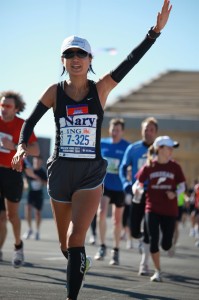 Ly says she now understands why Kenyans sometimes run three times a day: “If you want to be fast, and strong, you have to cover so much distance, so you have to break it down. Instead of one long run at once, it’s a lot of pounding, it’s good to break it up, so you can rest in between.”
Ly says she now understands why Kenyans sometimes run three times a day: “If you want to be fast, and strong, you have to cover so much distance, so you have to break it down. Instead of one long run at once, it’s a lot of pounding, it’s good to break it up, so you can rest in between.”
Two weeks after leaving Kenya, Ly ran the New York City Marathon in 3:16:02.
*****
Kenya’s running dominance has long left sports scientists scrambling to explain its success. Conceivably, the intrigue started at the 1968 Summer Olympics in Mexico City, when Kenyan Kip Keino stunned the world by beating American favourite and world record holder Jim Ryun in the 1500m. Keino finished an astonishing 20m in front. Then, one after another, fellow Kenyans emerged and dominated the track, the trails and the road.
Interestingly, one tribe in Kenya accounted for most victories. John Manners, a Kenyan-born journalist who has spent a lifetime studying the Kenyan running phenomenon, calculated the Kalenjin tribe, which only makes up about 10 to 12 per cent of the country’s population, were winning about three-quarters of all major races in Kenya. Internationally, Kalenjin runners were winning nearly three-quarters of all Kenyan gold medals. On top of that, one small sub-tribe of the Kalenjin, the Nandi, was producing about half of the world-class Kalenjin athletes.
Initially, Kalenjin country, 2,000 metres above sea level, took most of the credit. Living and training at high altitude endowed this group with exceptional aerobic capacity. But there was much more at play. The vision many Westerners have of young Kenyans running back and forth to school isn’t entire folklore. In 2004, a group of researchers from Kenya and the U.K. analyzed how elite Kenyan athletes got to and from school. Half of the international athletes travelled further than 5K to get to school. More than 80 per cent of them ran it. But not every elite athlete can attribute some part of his or her success to endless kilometres clocked as a student. Kalenjin Wilson Kipketer, former 800m world record holder, has been known to tell reporters: “I lived right next door to school. I walked, nice and slow.”
Of course, the biomechanical analysis is endless: Elite Kenyans have been poked and prodded and placed under a microscope. Researchers have studied their gait efficiency (very good), number of slow-twitch muscle fibres (very many), ground contact time (very little), stride frequency (very fast), hamstring and quadricep ratio (very high). Bengt Saltin, director of the Copenhagen Muscle Research Centre, studied elite Kenyans’ lactate levels and found it accumulates more slowly in their blood than their European counterparts. In other words, they can go further, and recover faster, with less oxygen.
The loaded, politically sensitive explanation is that Kalenjins enjoy a significant genetic gift for middle- and long-distance running. This isn’t off-limits for journalist Jon Entine, author of the book Taboo: Why Black Athletes Dominate Sports and Why We Are Afraid to Talk About It. “By almost any measure,” Entine writes, “the Nandi region is the greatest concentration of raw athletic talent in the history of sports. It’s a potent example of the interacting bio-cultural forces that shape great athletes.”
John Manners has also written about a possible genetic advantage: “The Kalenjin marry mainly among themselves; they have lived for centuries at altitudes of 2,000 meters or more; and, at least by tradition, they spend their days chasing up and down hills after livestock. So it is not unreasonable to suggest that over time some sort of genetic adaptation has taken place that has turned out to be helpful in competitive distance running.”
Genetic, geographic and environmental advantages aside, Kenyans’ socio-economic motivation to run can’t be ignored. In the same study that looked at how Kenyans travelled to school, about a third of the elite athletes told researchers they see athletics as a realistic and viable means of making money to help their families. Professional running opportunities suddenly introduced big incentives like huge prize purses from international races, lucrative sponsorship deals and lofty scholarships to American colleges. Importantly, Kenya seems to fall precisely between being too poor and too rich. In other words, most Kenyans are poor to the point that prize money is a strong incentive, but prosperous enough to have adequate food security to fuel good, long, hard training runs.
All of these theories are probably correct to a point, and so in Kenya’s case, it seems all the stars have aligned. A perfect spot on the map, a healthy diet, great genes, a strong foundation of bulk miles in their early years, and just enough motivation to get out and run every day. What’s amazing, for all the scientific research, the mathematical calculations and the data analysis, Kenyans themselves think very little about why they’re so fast. The ones I spoke with believe their success is simply due to running a lot. They work hard, put in heaps of mileage, take care of their bodies, they don’t drink and they sleep a lot. No heart-rate monitors, no gels – just fast running, day after day.
DAY SIX:
On my 4 p.m. afternoon run, I ambitiously decide to hop into a pack of 14 Adidas-clad Kenyan runners that is starting out at the same time as me. They smile and greet me with the Swahili word “karibu,” which means welcome. I tell them I’m a “pole pole muzungu,” or a slow white person. They all laugh and I get the sense that was an unnecessary label. I’m obviously a slow white person. But to my delight, their initial pace is slow, almost uncomfortably so, at 7 minutes per kilometre. The mood is relaxed and jovial and we’re all just having a good time. But then without noticing, over the course of about 5K on the dirt roads and through fields of grass and maize, the pace has dropped to 5 minutes per kilometre. Then it dips to 4:30, then 4:25, then 4:20, until I can’t keep up any longer.
The gap between me and five runners ahead widens, and widens some more. The few men behind me are urging me, “Close the gap! Close the gap!” I’m in pain and the only way I’ll close the gap is if those runners stop and stand still. There’s a lovely gesture Kenyans do when you start to fall behind. They simply point to the ground beside them as in, this is where you should be. They don’t say anything, they just point. Or they make this underarm scooping motion, like they’re trying to scoop you up and pull you along. It’s gentle and supportive and makes you feel looked after.
I tell the runners that are still around not to wait for me, because I know out of politeness some will. And so with that, I get dropped in no less than 20 seconds. Their pace, I can only estimate from my vantage point, has suddenly picked up to about 3 minutes per kilometre. Poof.
When I finally arrive back at the start, sweaty and high, every one of them is happy to see me. They give me high-10s. I’m humbled by their support even though I don’t completely understand it. I thank all of them for taking me out on The Best Run of My Life and they thank me immensely, too. They explain that even if I can’t keep up, I improve their run when I join them. They tell me I give them energy.
*****
The night before I leave, I finally have a chance to chat with Lornah Kiplagat, herself a Kalenjin. She was born here, but competes under the Dutch flag. Kiplagat has, at one point or another in her career, held world records in the road 5K, 10-mile, 20K and half-marathon. She’s been to two Olympics (Athens and Beijing), and is currently in marathon training for the London 2012 Games. I ask her what she thinks people learn from training here among some of the world’s best runners. She pats the air in front of her and says, “They come down.” Meaning? “They come down to the basics. They learn to just run. To stop paying attention to their heart rate monitors, their training, to stop over-thinking everything. They learn to just run. And enjoy it.”
I ask her about the scientific theories about what makes Kenyans so fast at middle- and long-distances. She calls most of them “bullshit.” “We run a lot. And we work hard. That’s why we’re so fast. I’ve never done my lactate. Never. They (the researchers) come here and want to take blood samples to study my DNA. It’s ridiculous.”
It occurs to me, standing there with Kiplagat on my last evening in Iten, that perhaps it’s this attitude of simplicity, this ability to distil running down to its purest, most basic form, that makes Iten so special and Kenyans so successful.
